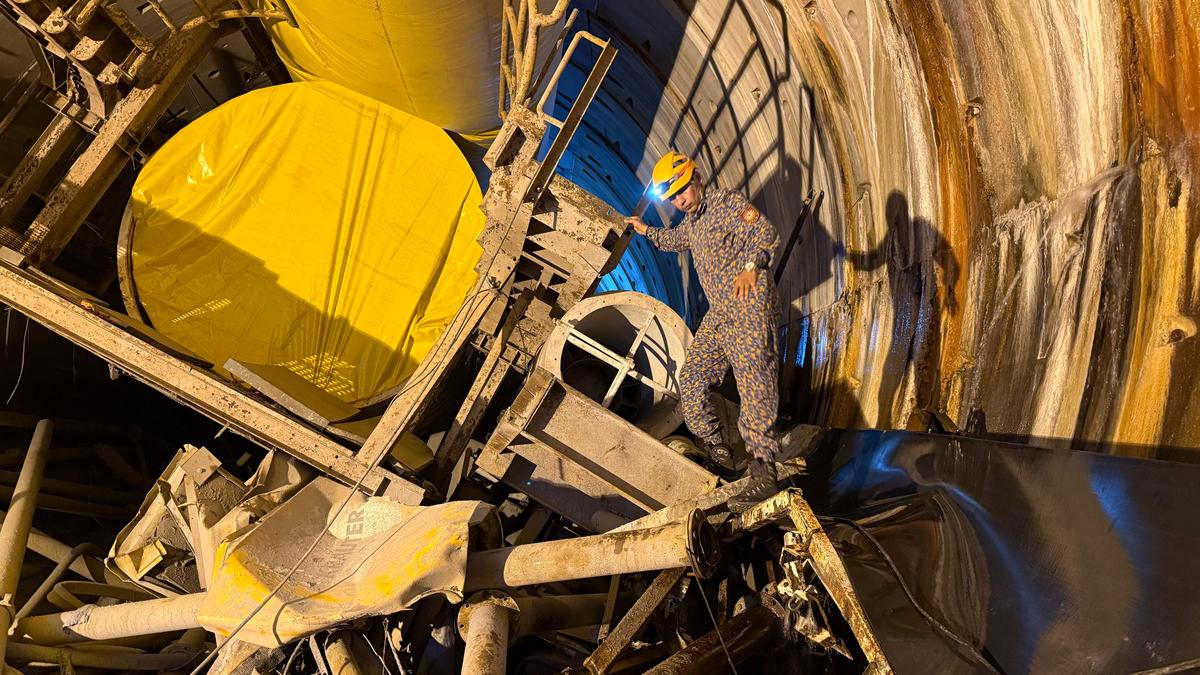
Slush level increases in SLBC tunnel; rescue teams prefer its removal to trace eight people trapped
The Hindu
Rescue teams face challenges in reaching trapped individuals in Srisailam tunnel due to increasing slush, requiring priority to dewatering efforts.
HYDERABAD
The joint teams of multiple agencies participating in the rescue operationto find eight persons trapped 14 km inside the Srisailam Left Bank Canal (SLBC) tunnel since Saturday morning have arrived at the conclusion that any attempt to cross the last 50 meters barrier completely filled with mud and debris from thetunnel boring machine (TBM) would be risky to the lives rescue teams.
Rescue works at Telangana tunnel collapse, February 25, 2025 updates
Even the divers of the Navy’s special forces unite Marcos were unable to wade through the slush, which is stated to be increasing constantly perhaps due to an increase in the intensity of water seepage. Formation of fresh cavities in the exact spot of the tunnel collapse which was throwing out more soil mixed with water, is being assessed as the reason for the rise in discharge of slush.
The Navydivers could wade through muddy water comprising 70% water and 30% slush . However, in the case of SLBC, the percentage of slush is found to be more than 70% and it would make it highly difficult for the divers to go through it with their heavy paraphernalia (equipment).
Accordingly, it was decided at a review meeting chaired by Deputy Chief Minister M. Bhatti Vikramarka, Ministers N. Uttam Kumar Reddy, Jupally Krishna Rao and Komatireddy Venkat Reddy and Disaster Management commissioner Arvind Kumar at the contract agency’s (Jaiprakash Associates) site office nearby the mouth of SLBC tunnel that removal of slush and dewatering should be given first priority to facilitate the rescue teams make a headway and reach the exact spot of accident where the two engineers, two technical staff and four workers are trapped.
Representatives of all the Central, State and other rescue agencies and those of the two work agencies explained at the meeting how it was getting increasingly difficult to cover the last mile to reach the trapped persons even as the uncertainty over the chances of their survival getting diminished with every passing hour.













